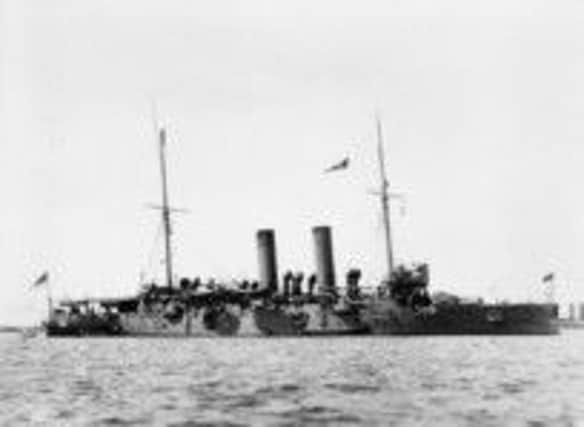Lisburn sailors lost during U-boat attack in October 1914


Amongst those lost were men from Lisburn, including 30-year-old Stoker William John Gillespie, whose body was never recovered.
This incident occurred on October 15, 1914 when the German Submarine U-9, which was patrolling the North Sea, came across two British Cruisers HMS Hawke and her sister ship HMS Theseus.
Advertisement
Hide AdAdvertisement
Hide AdUnder the command of German hero Commander Weddigen, U-9 fired on the British ships. This was the same German submarine which had caused the deaths of almost 1,500 British seamen only three weeks earlier with the torpedoing of the ‘Livebait Squadron’.
The submarine’s first torpedo hit HMS Hawke, igniting a magazine and causing a tremendous explosion which ripped much of the ship apart. Hawke sank in a few minutes with the loss of her Commander and 523 men. Only 74 men were saved.
In August 1914, at the outbreak of the First World War, Hawke was part of the 10th Cruiser Squadron, operating on blockade duties between the Shetland Islands and Norway. In October 1914, the 10th Cruiser Squadron was deployed further south in the North Sea as part of efforts to stop German warships from attacking a troop convoy from Canada.
On 15 October, the squadron was on patrol off Aberdeen and HMS Hawke stopped at 0930 to pick up mail from her sister ship HMS Endymion. Hawke proceeded to return to her station without zig-zagging to avoid danger, and was out of sight of the rest of the Squadron when a single torpedo from U-9 struck Hawke and she quickly capsized. The remainder of the Squadron only realised something was wrong when, after a further, unsuccessful attack on Theseus, they were ordered to retreat and no response was received from Hawke. The destroyer Swift was dispatched from Scapa Flow to search for Hawke and found a raft carrying 22 men, while a boat with a further 49 survivors was rescued by a Norwegian steamer. 524 men drowned, including the ship’s Captain, Hugh P.E.T. Williams, and 49 Ulstermen. Only 74 men were saved, six of whom were from Ulster.
Advertisement
Hide AdAdvertisement
Hide AdA surviving Stoker explained: “Those on deck for an instant immediately after the explosion saw the periscope of a submarine which showed above the water like a broomstick. The Hawke was holed above the engine room and commenced to cant over to starboard with alarming rapidity. Her plates were twisted and torn and a huge gap was rent in her side. An attempt to man the guns was made but owing to the extra acute list of the vessel it was found impossible to train them on the submerged craft.
“The horror of the situation was added to when a tank of oil fuel caught fire and the flames advanced with fatal rapidity. Seeing there was not the ghost of a chance of doing any good by remaining in what was obviously a death trap I determined to make a dash for it. I scrambled precipitately up the iron ladder to the main deck. All this had happened in less time than it takes to tell.
“But such is British pluck and coolness of nerve even in the face of such a situation that already after the initial shock the Captain, Commander and a midshipman were on the bridge and calmly on the fleet manoeuvre in the Solent, orders were given out and obeyed. The bugler sounded the ‘Still’ call which called on every man to remain at the post in which the call came.
“During the first minute or two, the belief was that all that was wrong was the boiler explosion, but the rapidity with which the cruiser was making water on her starboard side quickly disputed all minds of this belief.”
Advertisement
Hide AdAdvertisement
Hide AdAnother survivor explained: “The Captain, Commander and the midshipman stuck bravely to their posts on the bridge to the last, and were seen to disappear and the ship finally plunged bow first amidst a maelstrom of cruel, swirling waters.”